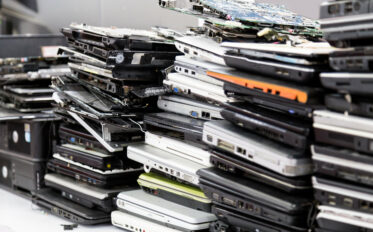Computers, tablets, and workstations are a cornerstone of the rapidly expanding IT sector. Their multiplication results in growing electricity consumption and mountains of electronic waste, which can and should be better tackled at design stage.
The computer stock in the EU was estimated at 535 million units in 2015, and may increase to 671 million by 2030.
The average lifetime of computers is short, roughly 5-7 years. The trend towards smaller and/or thinner mobile computers and tablets has resulted in products being more difficult to repair and dismantle, and consumers are often prevented from replacing their batteries themselves.
The recyclability of computers when they reach the end-of-life stage is also challenging, due to the large variety of plastics and flame retardants combined in the same product.
Furthermore, there is still significant energy saving potentials for these products. If no regulatory action is taken, the sector is expected to consume 20 additional TWh of yearly electricity in the EU by 2030, which is as much as the residential consumption of Belgium.
What is the European Union doing?
The EU has adopted an Ecodesign regulation for computers, with energy efficiency and power management requirements that entered into force in 2014 and 2016. The expected savings were between 12 and 16 TWh/year of electricity by 2020. However, these regulations did not include any material resource efficiency requirement.
A review study has been commissioned in 2018, and should be used to support new stages of requirements and the potential introduction of an energy label for computers. A report from the EU’s joint research centre has also looked at how material efficiency could be better tackled in computers.
What does the coolproducts campaign want?
-
More up-to-date regulations that truly challenge these expanding and fast-changing products, through bold and swiftly updated energy efficiency requirements;
-
Introduce an Energy Label for fixed and mobile computers, so that consumers can make more informed decisions;
-
Develop methods for testing computers in their real active mode, and not only in ‘idle’ modes (which are no more good proxies for real-life performance);
-
Implement ambitious repairability and recyclability requirements, including (but not limited to) ensuring easy access to key components (such as batteries), making spare parts available for a minimum period of time, identifying and limiting the presence of hazardous substances, and making the presence of data deletion tools a rule;
-
Investigate durability requirements, notably enhanced upgradability, mandatory availability of software updates, improved performance of key components and the resistance to shocks, liquid spills, etc.
Coolproducts technical input and position papers:
2023 – Reparability scoring system for laptops: comments from civil society organisations
2017 – Technical contribution to draft review study report
Further reading
2012 – Umweltbundesamt – Timely replacement of a notebook under consideration of environmental aspects



